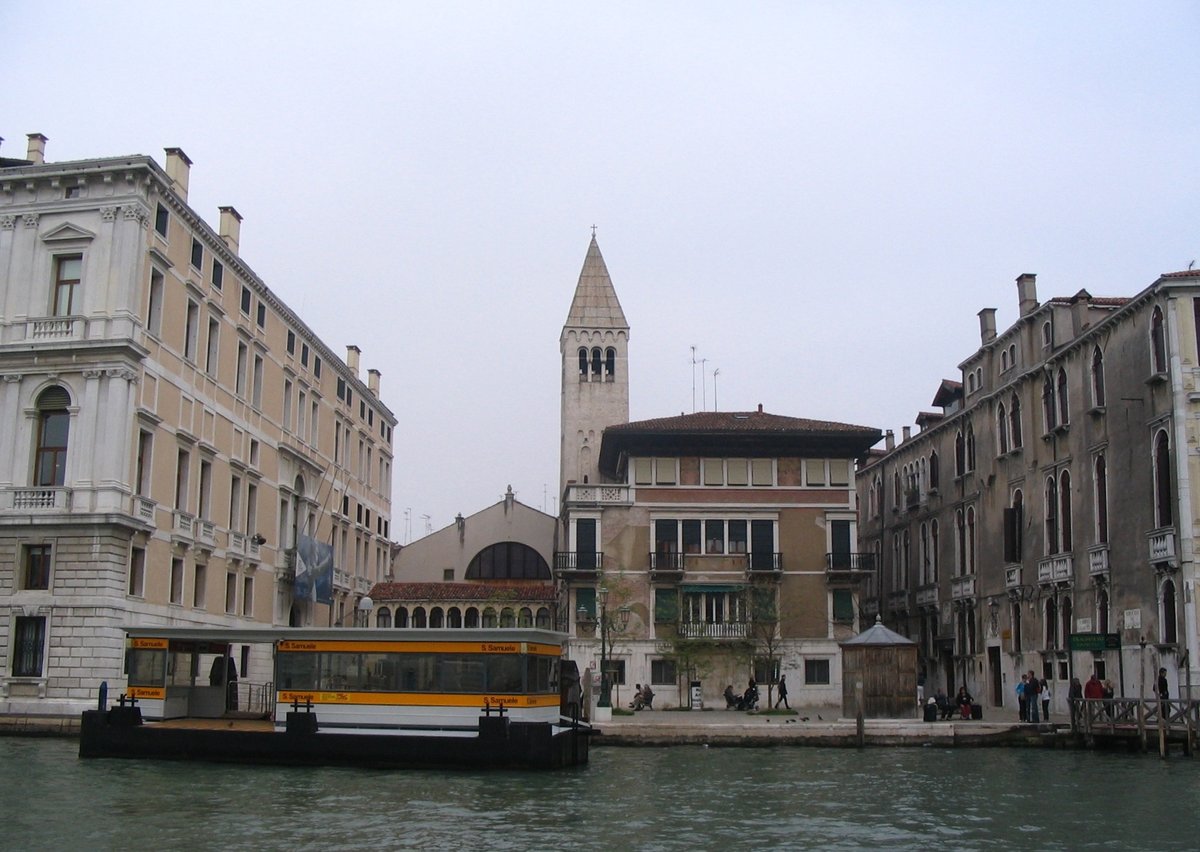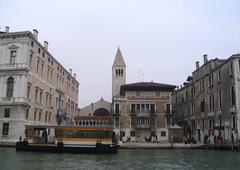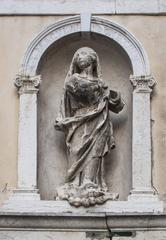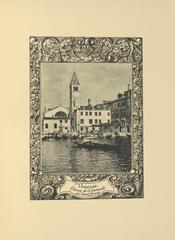
San Samuele: Visiting Hours, Tickets, and Historical Guide to Venice’s Hidden Gem
Date: 15/06/2025
Introduction
San Samuele is a captivating Venetian destination nestled in the San Marco district, offering an authentic window into the city’s spiritual, artistic, and social fabric. Centered around the tranquil Campo San Samuele and the historic Chiesa di San Samuele, this area boasts a harmonious blend of medieval history, Renaissance and Baroque architecture, and vibrant contemporary culture. With its strategic location along the Grand Canal, proximity to landmarks like Palazzo Grassi, and connections to legendary figures such as Giacomo Casanova, San Samuele is both a serene refuge and a lively cultural hub. This guide provides comprehensive, non-redundant information on San Samuele’s history, architectural highlights, visiting hours, ticketing, accessibility, and insider tips—empowering you to make the most of your visit to this Venetian treasure.
Historical Development and Significance
San Samuele’s roots stretch back to the early medieval period, with the Chiesa di San Samuele first documented in the 11th century. Founded by the Boldù and Soranzo families, the church endured fires and reconstructions, most notably in 1685, which gave rise to its current Baroque form (Wikipedia). Its dedication to the Old Testament prophet Samuel is unique in Venice, underscoring the city’s openness to diverse religious influences and its role as a crossroads between East and West (arte.it).
Set along the Grand Canal, San Samuele became a focal point for religious, civic, and artistic life. The adjacent campo (square) evolved as a peaceful gathering place, offering respite from the busier parts of Venice and fostering community spirit. Over the centuries, San Samuele has witnessed the ebb and flow of Venetian nobility, merchants, and artists, and it remains a microcosm of the city’s ingenuity and resilience (Rost Architects).
Architectural and Artistic Highlights
Chiesa di San Samuele
The Chiesa di San Samuele exemplifies Venice’s layered architectural history. Its 17th-century Baroque reconstruction preserved elements of earlier styles, notably the late-Gothic apse—a rare survivor in Venice. The understated façade is complemented by a distinctive bell tower, making the church a recognizable landmark on the Grand Canal (Italy Heaven).
Inside, visitors discover a single nave with side chapels, a wooden ceiling, and a 17th-century marble main altar. The apse is adorned with early Renaissance frescoes depicting Christ, the Evangelists, Saints, and Sibyls—mythological prophetesses believed to have foretold Christ’s life. These frescoes, restored in the early 21st century, are attributed to the Paduan or Bolognese schools and are among the few such cycles surviving in Venice (Wikipedia). The church also houses a 14th-century crucifix by Paolo Veneziano and a 13th-century Madonna and Child icon with a Byzantine silver-gilt revetment.
Artistic and Cultural Legacy
San Samuele’s cultural legacy extends beyond its church. The church has hosted exhibitions during the Venice Biennale, the city’s renowned art and architecture festival (Labiennale). The area’s ongoing artistic vitality is further exemplified by Palazzo Grassi, a neoclassical palace on the campo’s edge, now home to the Pinault Collection—a major center for contemporary art (Pinault Collection).
San Samuele is also intimately linked to Giacomo Casanova, whose parents married and who was baptized here. As a teenager, Casanova briefly entered the priesthood at San Samuele under the guidance of Father Tosello, with Senator Malipiero—his guardian—living nearby (Casanova’s Venice).
Campo San Samuele: Urban and Social Life
Campo San Samuele is a serene, flower-adorned square that invites relaxation away from the crowds of Piazza San Marco. Surrounded by historic palazzi, including Palazzo Grassi, it is a favored spot for both locals and visitors to enjoy a coffee or gelato, watch Venetian life unfold, or attend small markets and cultural events (Evendo). The square is easily accessible by vaporetto (water bus) via the San Samuele stop, and its pedestrian-friendly layout makes it ideal for all ages (Labiennale).
Palazzo Grassi: Contemporary Culture in a Historic Setting
Palazzo Grassi, designed by Giorgio Massari and completed in 1772, stands as a testament to Venetian neoclassical architecture. Its grand marble façade and elegant courtyard now serve as a backdrop for cutting-edge contemporary art exhibitions curated by the Pinault Collection (Pinault Collection). The adjacent Teatrino di Palazzo Grassi, a restored 20th-century theater, hosts film screenings, lectures, and performances, further enriching the area’s cultural offerings.
- Opening Hours: 10:00 am – 7:00 pm (closed Tuesdays). Last admission at 6:00 pm.
- Tickets: €15–€20, with discounts for students and seniors. Online booking is recommended to avoid queues (Palazzo Grassi).
Visiting Information: Hours, Tickets, and Accessibility
Chiesa di San Samuele
- Hours: Open daily, 9:00 am – 5:00 pm. Hours may vary for liturgical services or restoration work—check the parish website or contact the office for current schedules.
- Admission: Free; voluntary donations are encouraged for preservation.
- Guided Tours: Available via local operators; advance booking recommended.
Getting There
San Samuele is well-connected by ACTV vaporetto:
- Nearest Stops: San Samuele (Lines 2, N) and Sant’Angelo.
- From Santa Lucia Train Station or Piazzale Roma: Line 1 or 2, approx. 20–25 minutes (Europe for Visitors).
- On Foot: A scenic 10–20 minute walk from major landmarks such as Piazza San Marco and Rialto Bridge (Lonely Planet).
Facilities and Accessibility
- Facilities: No public restrooms in the campo; facilities available at nearby museums and cafés (fee applies).
- Accessibility: Flat, open square and ramps at vaporetto stop. Some uneven pavement; bridges may have steps. Assistance available on request at San Samuele church (Labiennale).
Practical Tips for Visitors
- Best Time to Visit: Early morning or late afternoon for a quieter experience and beautiful photography.
- Dining: Enjoy local cafés and gelaterias around the square for authentic Venetian refreshments.
- Transport: Vaporetto tickets are €9.50 (75 minutes) or available as multi-day passes. Always validate before boarding (Venice Travel Tips).
- Tickets and Fees: Entry to the campo and church is free; museums require tickets. A €5 day visitor entry fee applies to day-trippers as of 2025 (Earth Trekkers).
- Events: Check for Biennale exhibitions, the Venice Carnival (in 2025 themed “Il Tempo di Casanova”), and local markets (Images of Venice).
Seasonal and Cultural Considerations
- Weather: Spring and early autumn offer the most comfortable climate. Winters are quieter but may bring “acqua alta” (high water)—pack waterproof footwear.
- Local Etiquette: Dress modestly in religious sites. Use water fountains, recycle, and support local businesses to help preserve Venice’s environment (Italy Mamma Mia).
- Safety: Venice is generally safe, but remain vigilant for pickpockets in crowded areas (Lonely Planet).
Frequently Asked Questions (FAQ)
Q: What are San Samuele’s visiting hours?
A: The church is usually open 9:00 am – 5:00 pm; Palazzo Grassi, 10:00 am – 7:00 pm (closed Tuesdays). Always check for updates before your visit.
Q: Is there an entry fee for San Samuele?
A: Entry to the square and church is free; Palazzo Grassi and other museums require paid tickets.
Q: How do I get to San Samuele?
A: By vaporetto (Lines 2, N), or a 10–20 minute walk from major landmarks.
Q: Are guided tours available?
A: Yes, local tour operators offer art, history, and architecture-focused tours including San Samuele.
Q: Is San Samuele accessible for visitors with disabilities?
A: Yes, the square and church offer ramps, though some bridges in Venice have steps.
Q: Are there special events at San Samuele?
A: The area hosts Biennale exhibitions, Venice Carnival events, art shows at Palazzo Grassi, and local markets.
Nearby Attractions and Recommendations
- Palazzo Grassi: World-class contemporary art exhibitions (Palazzo Grassi)
- Campo Santo Stefano: Lively square with cafés and shops
- Local Shops: Artisan boutiques for Murano glass and Venetian crafts
- Dining: Trattorias and wine bars offering traditional cicchetti (Timeout Venice)
Emergency and Visitor Services
- Police: 112
- Medical Emergency: 118
- Pharmacies: Marked by green cross signs, several nearby
- Tourist Info: Official office at Piazza San Marco
Sustainable Travel
- Respect local residents and keep noise to a minimum.
- Use public bins and recycle.
- Support local artisans and businesses.
Visuals and Media
- [Image: Chiesa di San Samuele façade from the Grand Canal – alt text: “San Samuele church façade along Venice’s Grand Canal”]
- [Image: Interior frescoes of the apse – alt text: “Early Renaissance frescoes inside San Samuele”]
- [Interactive Map: San Samuele location and nearby attractions]
Internal Links
Conclusion
San Samuele stands as a vibrant testament to Venice’s layered past and dynamic present. Whether drawn by rare Renaissance frescoes, contemporary art at Palazzo Grassi, or the peaceful charm of a canal-side square, visitors will find San Samuele an essential and memorable stop on their Venetian journey. Plan ahead, immerse yourself in local culture, and explore the area’s rich offerings for an unforgettable experience.
For real-time updates and personalized itineraries, download the Audiala app and follow our latest Venice guides online.
Sources and Further Reading
- Urban and Architectural History of Venice, 2024, Rost Architects
- Vampires, Palaces and Art Shows in Venice, Italy Heaven
- Campo San Samuele, Evendo
- Venice Biennale Noticeboard, Labiennale
- Palazzo Grassi Official Website, Pinault Collection
- San Samuele Church Art Guide, Arte.it
- San Samuele and Venice Culture, Wikipedia
- Venice Architecture City Guide, ArchDaily
- Venice Travel Tips, VeniceTravelTips.com
- Visiting Venice Cultural Sites, VisitingVenice.net
- Images of Venice Calendar of Events 2025, ImagesofVenice.com















































































































